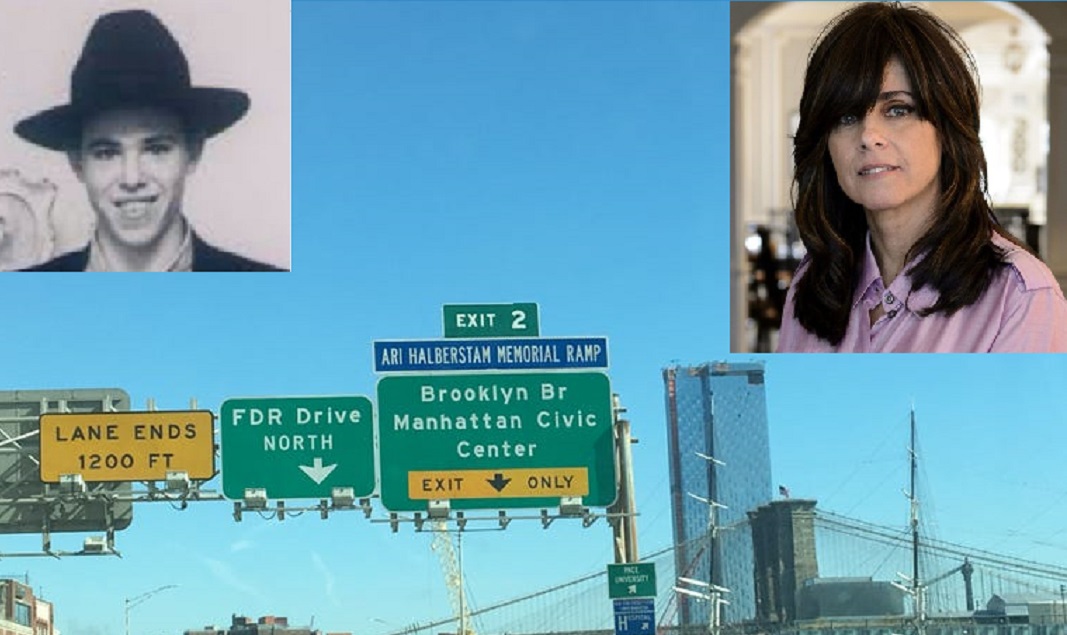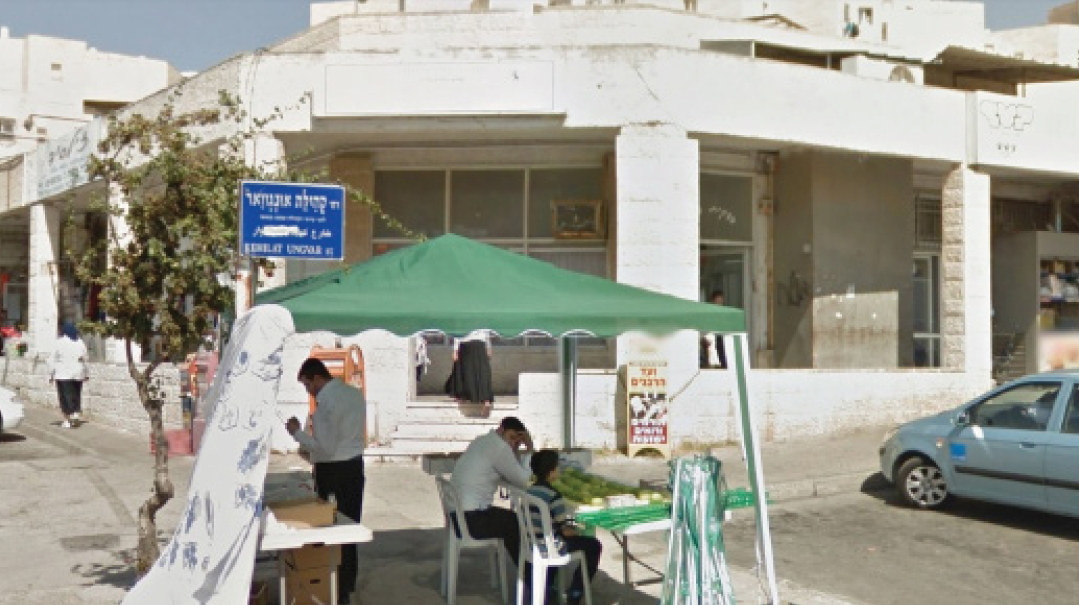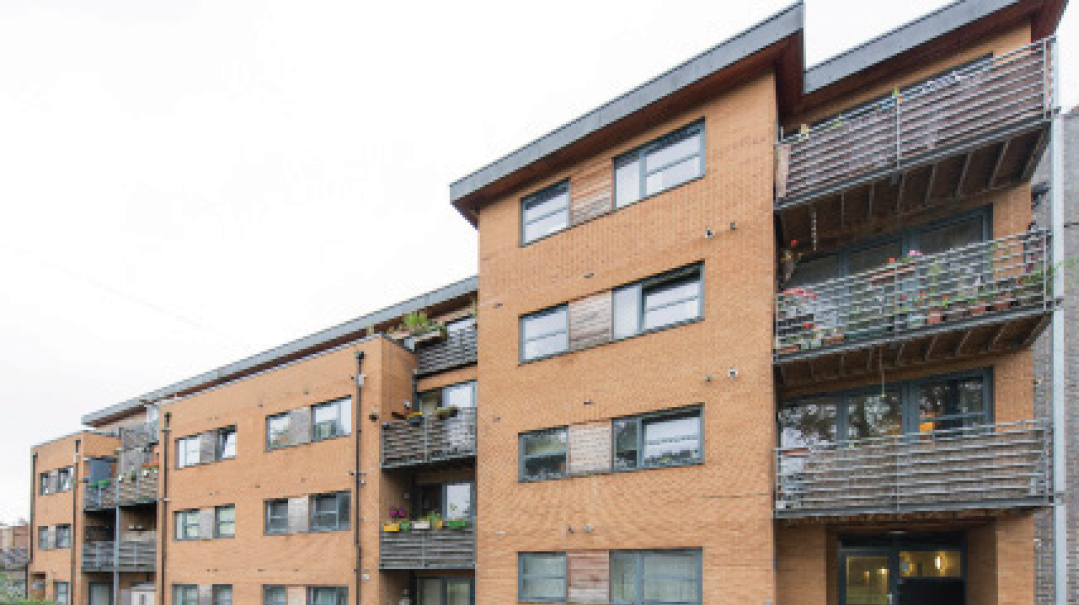A Bridge Too Far
| April 5, 2020“I didn’t care how quickly it happened, I was thinking about the future. I wanted it for posterity so that Ari should be remembered every single minute and every single day.”

ARI HALBERSTAM MEMORIAL RAMP, Brooklyn Bridge, New York
Dedicated in memory of Ari Halberstam Hy’’d
WHO WAS ARI HALBERSTAM?
Ari Halberstam was a 16-year-old Lubavitcher chassid who was shot in cold blood on 23 Adar/March 1, 1994 by an Arab murderer looking for revenge against the Jews and finding his target — a van full of bochurim escorting the Rebbe back to Crown Heights.
The previous Friday, a Lebanese jihadist named Rashid Baz had attended a raging anti-Semitic sermon in a Brooklyn mosque, on the heels of escalating tensions in Israel, which had been hit by a spate of terror attacks. (Witnesses reported that he shouted “Kill the Jews,” a call for revenge for the shooting spree in the Mearas Hamachpeilah by Dr. Baruch Goldstein the previous week, in which 29 Muslims were killed.) By Tuesday morning, his plan was laid out: his target would be the figure he saw as the leader of the Jews — the Lubavitcher Rebbe.
Because of the volatile situation and residual tensions from the 1991 Crown Heights race riots (and a rumor that the Rebbe had been the target of a previous assassination attempt), a police car was stationed around the clock outside Lubavitch headquarters at 770 Eastern Parkway, where the 92-year-old ailing Rebbe had been living since his stroke two years prior. That morning he was due to have cataract surgery at the Manhattan Ear, Eye, and Throat hospital, and as a police security precaution, the route the Rebbe’s ambulance and police escort took remained undisclosed, while the accompanying chassidim were instructed to take a different route.
Although the Rebbe led a very private life, Ari’s father, Rabbi David Halberstam, was the Rebbetzin’s attendant and house manager, which is how his children became close to the Rebbe’s nuclear family. Ari, the oldest, became especially close to Rebbetzin Chaya Mushka, who treated him as the grandson she never had. In fact, it was the Rebbe who taught him alef-beis when he turned three. It was therefore natural that Ari was part of the entourage of chassidim to accompany the Rebbe to the hospital. But a Divine decree determined how Ari wheedled his way back onto the packed van on the return home.
After the Rebbe’s surgery, Ari had barely finished davening when he realized the van had already left, and darting out of the building where the van was already rolling back, he banged on the window and managed to squeeze himself in, the straps of his tefillin still unraveled.
Meanwhile, the Rebbe’s ambulance and police escort took the Brooklyn Battery Tunnel, which was closed off to other traffic in the interim. Rashid Baz, who was tailing the caravan closely with a load of ammunition — a submachine gun, two 9mm guns, and a “street sweeper” shotgun — now faced a dead end. All geared up for an attack, he changed course for the Brooklyn Bridge where, on the ramp, he spotted the packed passenger van carrying 15 identifiably chassidic bochurim. They were waiting for the yield sign. When asked at the trial if he saw who the occupants were, the terrorist testified, “Yes, Hassids, and they were on top of each other.”
He merged into their lane and shot forty rounds of ammunition at them, pursuing the van of terrified passengers across the entire length of the Brooklyn Bridge, hitting Ari in the back of his head — the bullet was lodged in his forehead where the Rebbe kissed him as a child — and permanently injuring his friend Nochum Sosonkin. Ari died five days later.
In those days, says Ari’s mother, Mrs. Devorah Halberstam, terrorism was not a concept New Yorkers were familiar with. “Being a fourth-generation American, I didn’t even appreciate anti-Semitism,” she says. “That’s why the horrific Crown Heights riots three years earlier were so shocking.”
Devorah remembers watching the mayhem from her window. “I saw with my own eyes how the police stood and did nothing,” she recounts. “I heard with my own ears how the mobs screamed ‘Hitler didn’t finish his job!’ It shook me to the core.”
But there’s anti-Semitism and there’s terrorism. So while Ari’s murderer was convicted of second-degree murder and 14 additional counts of attempted murder and sentenced to 141 years to life in prison, the crime was first classified as an act of road rage. Devorah tirelessly fought the Department of Justice for seven long years to get it reclassified as terrorism.
In the beginning of September 2001, in an unprecedented move, the Justice Department finally labeled the shooting a terrorist act; Devorah’s efforts had succeeded. The next thing she knew, politicians had dubbed her “the prophet,” because uncannily, just three days after the reclassification, two jetliners slammed into the Twin Towers, turning terrorism into a household word.
“You were right,” admitted law enforcement personnel who showed up unexpectedly at her front door after 9/11. “Now tell us everything you know.”
Before Ari’s murder, Devorah knew nothing about the criminal justice system, let alone about guns. But by 9/11, she was an expert in the field. She authored the first New York state laws on terrorism together with Governor George Pataki. Today she trains law enforcements around the world and has been appointed as New York’s honorary commissioner for the police department for community safety.
Twenty-six years later, Devorah is only too happy to reminisce about her beloved firstborn. “He was six feet tall, handsome, with eyes that were blue like marbles. He was beloved by everyone and a great all-arounder. He loved basketball, yet he was also very ruchniyusdig and chassidish. He would daven b’arichus, and even we knew not to enter the room he locked himself into when he davened. It’s interesting that his final mitzvah was his favorite one, that of putting on tefillin. And because he spent so much time over it, he had to run and catch the van, tefillin still unraveled. That’s the way we received his tefillin, which have since been divided among two of his brothers, one the Rashi and one the Rabbeinu Tam.”
At a farbrengen at one point during the Rebbe’s illness, Ari announced in front of his friends, “I’d give up my life for the Rebbe.” And two weeks before his murder, he was in the kitchen with his mother when he casually remarked, “‘Ma, you don’t know who I am.”
“I still remember looking up at him, somewhat mystified,” his mother recounts, “and saying, ‘What do you mean? Nobody knows you better than your own mother.’ ”
“You’ll see,” he answered.
And two weeks later the neshamah that uttered those cryptic words left This World. Indeed, he gave his life for the Rebbe.
WHAT’S IN A NAME?
The Ari Halberstam Memorial Ramp is a 180-degree ramp leading up to the Brooklyn Bridge; it’s traversed by millions of cars every year. The bridge is a main thoroughfare with several merging points.
Devorah had originally hoped to rename the Brooklyn Bridge for her son, but since it’s a landmark that falls under federal jurisdiction, the bridge itself could not be renamed. So instead she lobbied to memorialize Ari on the ramp leading up to it. The ramp was as yet unnamed and was where the shooting actually unfolded.
“I didn’t care how quickly it happened,” says Devorah. “I was thinking about the future. I wanted it for posterity so that Ari should be remembered every single minute and every single day.”
Devorah had to go before the city council and have the law passed by then-mayor Rudy Giuliani. There was zero opposition from the 51 council members even though they were from various ethnic backgrounds. The naming, embedded on the New York City map, was introduced a year after the murder, in what was said to be one of the quickest bills ever to be passed.
To figure out how to display the signs, Devorah walked along the site with the Commissioner of Transportation. The murderer came from one side of the ramp and the boys were on the other, so they placed the signs on both sides, in accordance with how the attack unfolded.
Years later, Devorah still gets regards from people driving over the ramp, who have called her just to say, “I’m crossing the bridge now so I was thinking of you and Ari.”
As for her own visits to the ramp, it’s a daily thing. “Before the murder, I was always in Manhattan, but I never used the Brooklyn Bridge. Afterward, I always did. No matter which side I’m coming from, I put on my blinkers, shut the radio, put aside my phone, and recite Ari’s kapitel of Tehillim [according to the age he would be —Ed.] To me, Ari’s blood will always be on that bridge. When I see Ari’s name, it’s not just personal, it’s for Klal Yisrael. It acknowledges that he was killed because he was a Jew.”
OTHER NOTABLE NAMINGS:
- The Jewish Children’s Museum — Ari’s mother Devorah is its co-founder and director of external affairs.
- Ari’s Law — an interstate gun-trafficking law.
(Originally featured in Mishpacha, Issue 806)
Oops! We could not locate your form.










